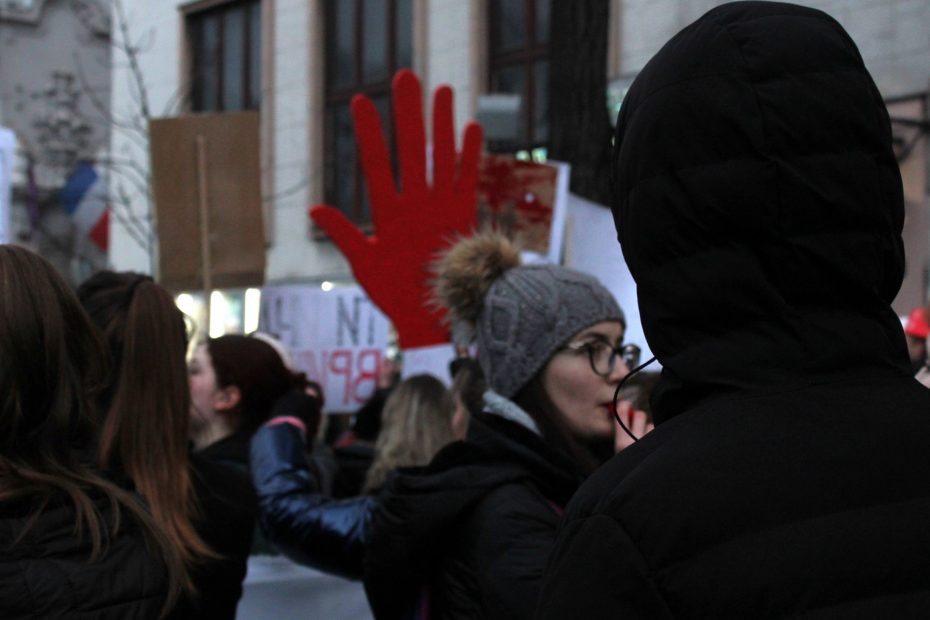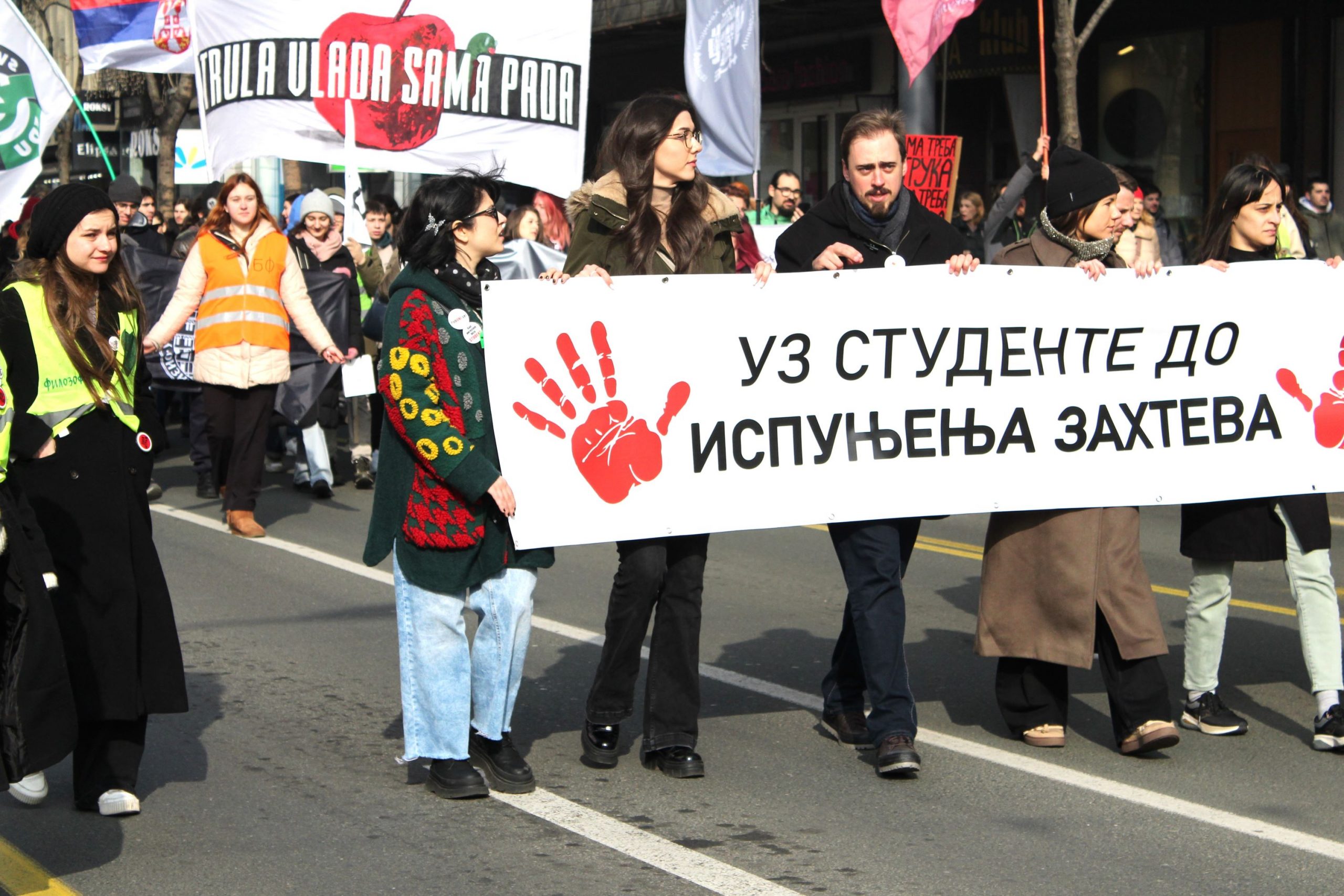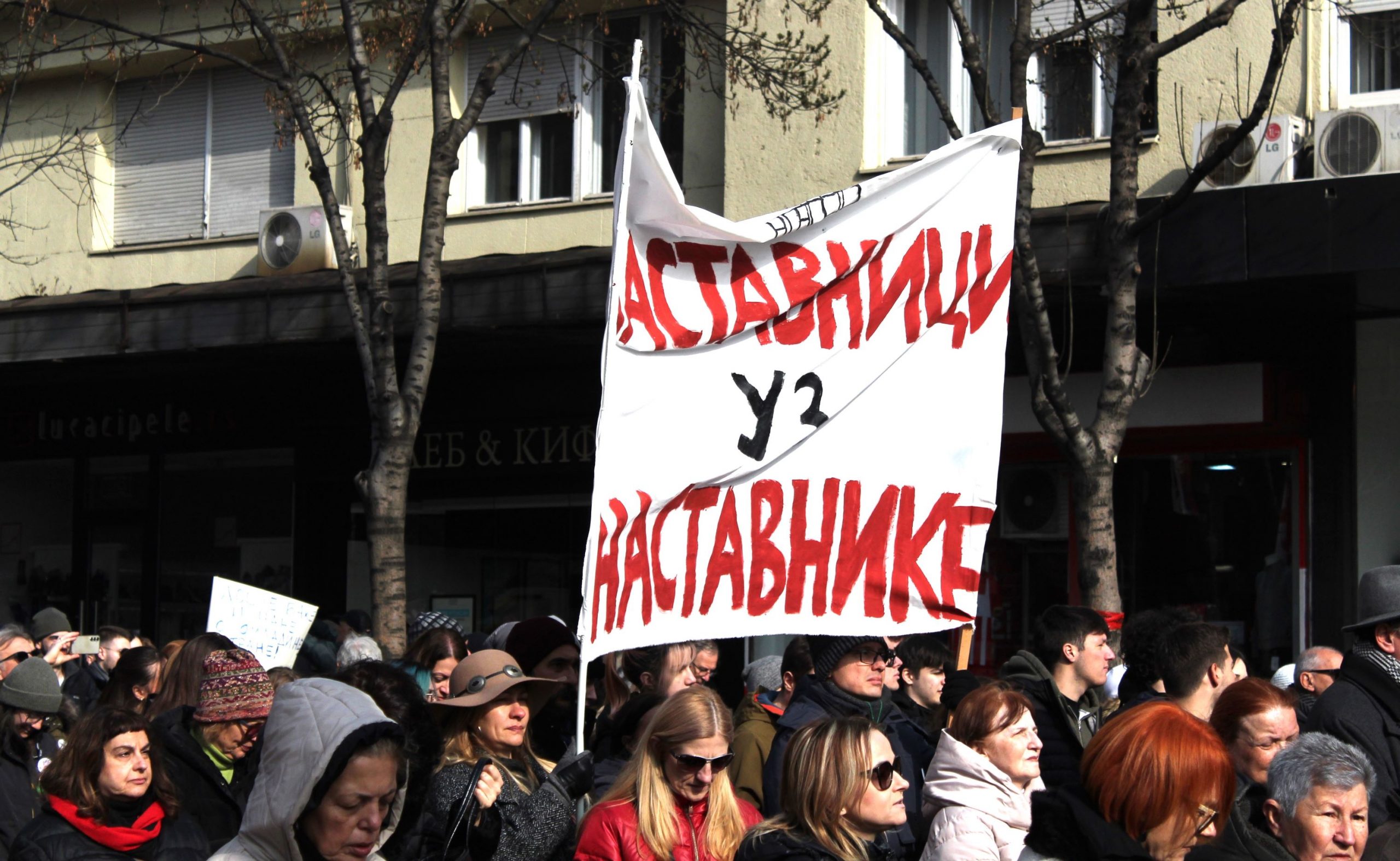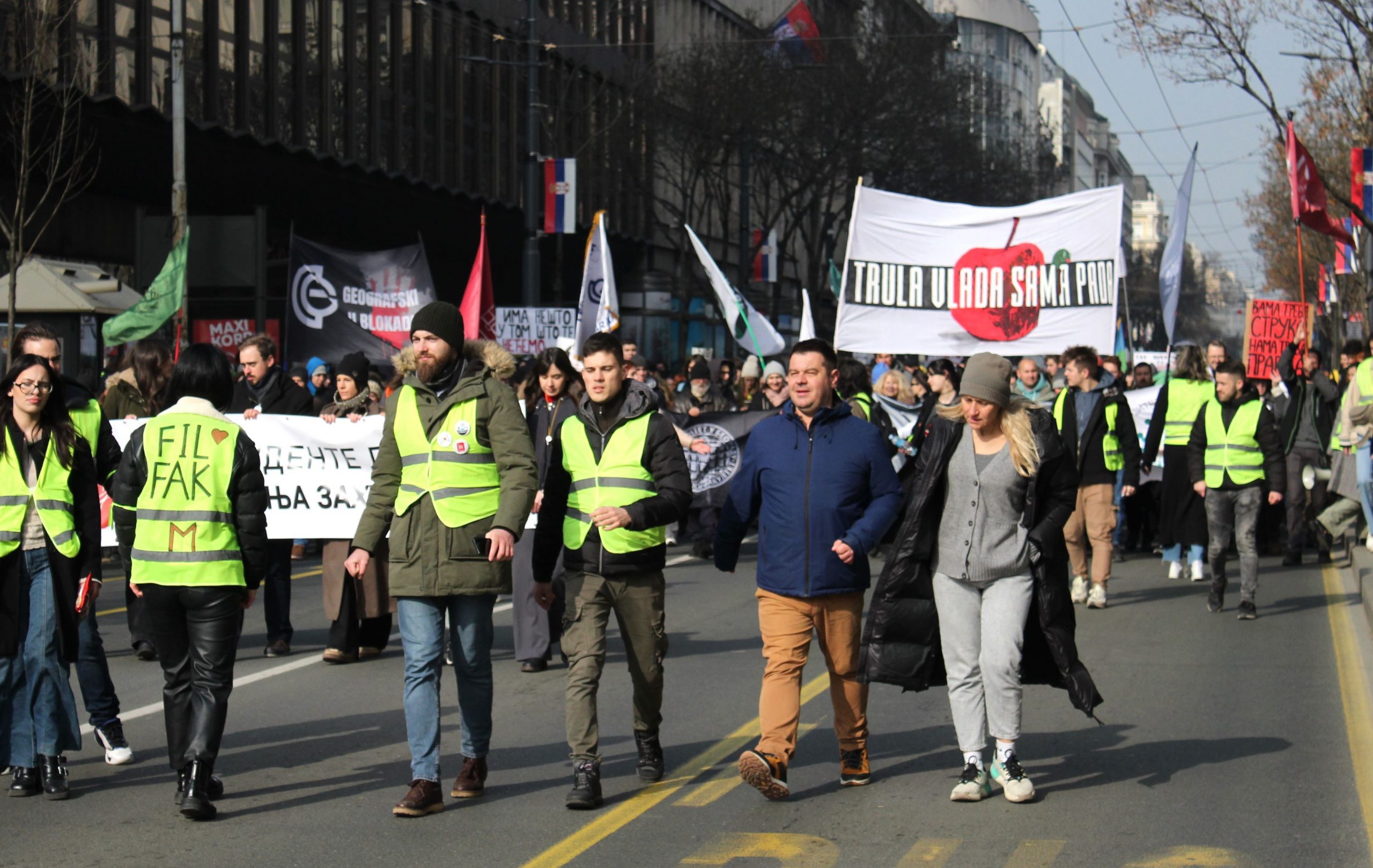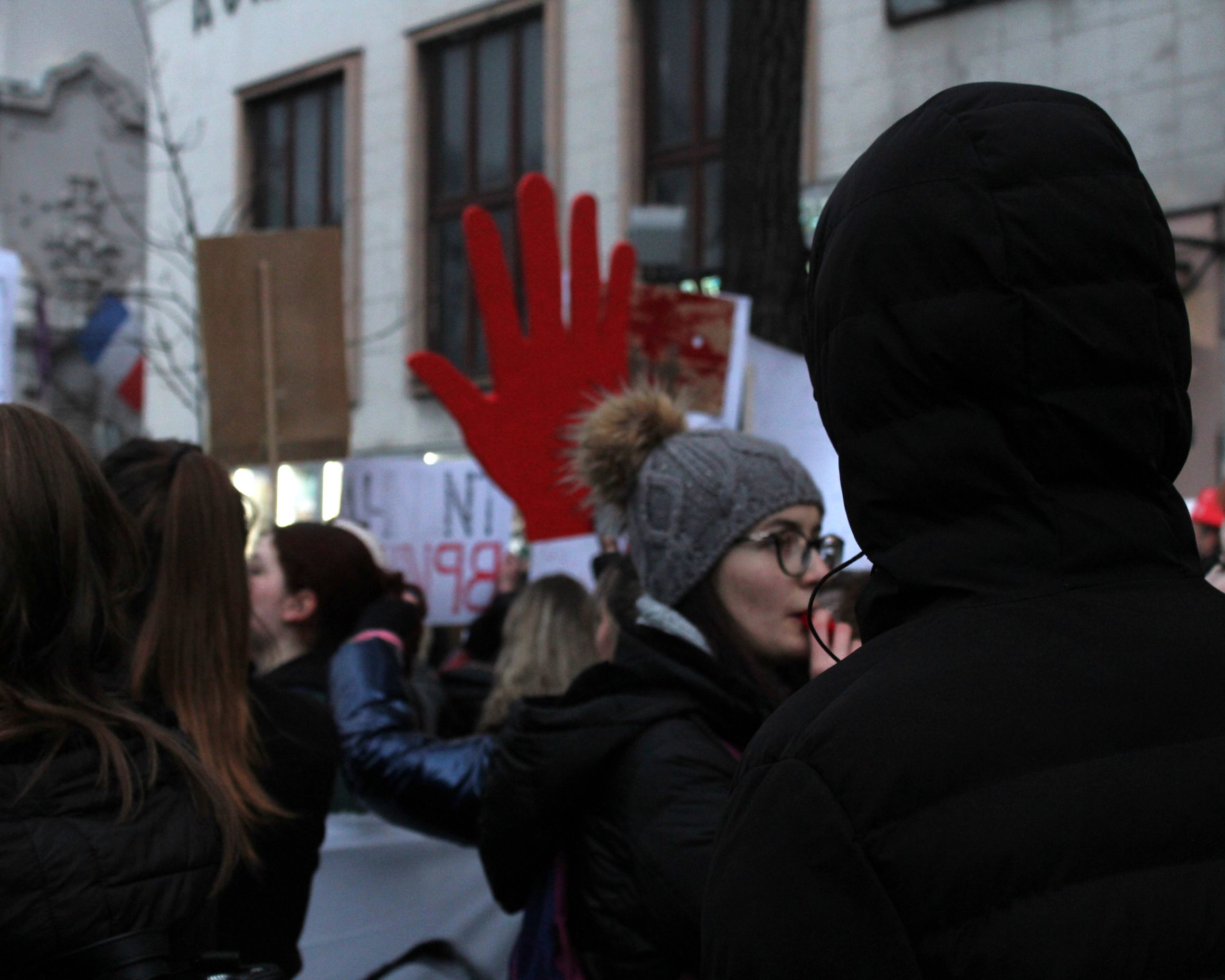Serbia has a long history of civic and student demonstrations. The latest wave of protests led by students was triggered by the collapse of a newly reconstructed railway station canopy in the city of Novi Sad that killed 15 people. Following attempts by authorities to downplay responsibility, students initiated mass demonstrations, soon joined by teachers, high school students, university professors, researchers and citizens.
The protests have resulted in the blockade of university faculties and numerous high schools. With the major democratic bodies at the university paralyzed and failing to represent students’ voices, students established an alternative decision-making process through plenums—open assemblies where decisions are made using direct democracy and active participation from all students. This decision-making model was also adopted in schools, where teachers and staff actively participate in plenum discussions and decision-making.
This wave of sudden civic activism raises a crucial question: Has education for and about democracy empowered young people to become more aware of their rights, responsibilities and possibilities to act? While educational reforms have incorporated democratic competencies into the curriculum, their true impact on youth engagement remains to be seen.
Serbia has a long history of student-led civic activism. From the mass protests of the 1990s against Slobodan Milošević’s regime to present-day demonstrations, young people have consistently played a key role in challenging those in power. The most recent student protests in the winter of 2024–25 uphold this tradition, now driven by students through new forms of organizing. For the first time in history, high school students have joined the university students’ movement, alongside teachers and many other citizens.
What Sparked the Protests?
On November 1, 2024, a tragic accident at the newly reconstructed railway station in Novi Sad led to the deaths of 15 people and several serious injuries. The incident exposed deep flaws in the country’s infrastructure projects, long plagued by mismanagement and corruption. As authorities scrambled to shift blame and withhold information, public outrage intensified.
In the days following the tragedy, it became clear that state authorities were attempting to minimize responsibility—releasing contradictory statements, such as denying the canopy was part of the reconstruction and publishing incomplete documentation. Since the Serbian Progressive Party (SNS) came to power in 2012. Serbia’s democratic institutions have faced mounting challenges: illegal demolitions, the erection of monumental statues under secret contracts, corruption scandals, and the rise of so-called GONGO organizations. As a result, Serbia’s political landscape has steadily deteriorated, with the government exhibiting increasing characteristics of a hybrid regime and dictatorship.
Public dissatisfaction, already on the rise, peaked after a school shooting in Belgrade and a mass killing in villages near the capital city in the spring of 2023. Waves of sporadic yet large-scale protests followed, culminating in the Novi Sad demonstration, which ended in clashes and the arrest of several student protesters. The inadequate response from both, institutions and the media prompted students from the Faculty of Dramatic Arts to take to the streets in memory of the 15 victims. After facing physical attacks from members of the ruling SNS party, students began blocking their faculty. Soon, students from other faculties at Belgrade University joined in solidarity. They formed informal groups, organized meetings, and adopted direct decision-making processes, ultimately leading to blockades of nearly all faculties across Serbia.
The governing bodies of the University of Belgrade backed the student-led movement, endorsing demands formulated in student plenums , which called for:
Full transparency regarding the railway station reconstruction.
The release of arrested student demonstrators and the dismissal of all charges.
Accountability for those responsible for attacks on protesters.
A 20% increase in state funding for universities.
By mid-December 2024, high school students had joined the protests, followed later by their teachers. Although the first semester was abruptly cut short a week early by a decision from the Ministry of Education aimed at halting the school protests, many high schools—especially gymnasiums in larger cities—did not resume regular classes afterward.
Gymnasium teachers, dissatisfied with their union representatives, formed new informal associations and went on blockades starting January 20, 2025. By January 31, 2025, it was evident that 21 high schools in Belgrade had suspended classes. In the meantime, high school students formed self-organized groups (plenums) to make collective decisions.
The Role of Civic Education: How Has Civic Education Contributed to Awakening Democracy Among Youth?
This wave of activism raises a critical question: Has twenty years of civic education and the introduction of democratic competencies contributed to raising awareness among young people about their rights and responsibilities?
Civic education was first introduced in Serbia during the 2001/2002 school year. In the Serbian education system, it is categorized as an additional compulsory/elective subject. Students were required to choose between Civic Education or Religious Education, and the subject covered all grades of primary and secondary education (ages 7 to 18).
The introduction of Civic Education occurred in an international context, influenced by the United Nations Decade for Human Rights Education (1995–2004) and concurrent developments in democratic education across Europe. The most recent curriculum reform (2018) is based on four key themes:
Human rights
Democratic society
Contemporary social processes
Civic activism
Alongside civic education, Serbia’s educational curriculum adopted the Reference framework of competences for democratic culture, integrating them into all subjects. Despite various challenges—such as resistance from traditionally oriented teachers and misunderstandings of concepts, this reform was ultimately accepted by different education stakeholders, including teachers, school authorities, and parents.
In conversations with key participants in these protests— university students, high school students, and teachers actively involved in the blockades—they shared their reasons for protesting and reflected on the role of education in fostering democracy within the Serbian school system.
N.N. (22 years old, student), when asked whether education for democracy contributed to the protests in Serbia, responded:
“Absolutely! This education played a major role in sparking protests and organized resistance in Serbia because it led to an understanding of democracy—not just as a concept, but as a living system. Those of us who went through certain education cycles realized that democracy is an ongoing process that includes respect for human rights, laws, and justice. Decision-making must be in the hands of the citizens, and institutions must do their jobs.”
When asked how democratic processes are directly visible in student gatherings, he stated:
” The purest and most authentic form of democracy in these protests lies in the function of the plenums. What makes them unique is their direct democracy—where all students are invited to participate and freely express their opinions without fear of being targeted. The rotation of leading members and the absence of a single leader protect the plenums from political influence. I believe that the lack of central leadership is a key factor in their success so far”.
The fourth student demand does not directly relate to democratic processes but falls within the economic status of faculties. However, according to students, it remains crucial:
“This demand is the only one directly concerning students and is in the interest of all students across Serbia. It is not just about student status but also about the economic position of faculties, which are currently in dire financial condition.”
S.V. (17 years old, high school student in Belgrade) is also an active participant in protests at her high school. When students discuss civic engagement,” the role of teachers is seen as crucial and the importance of teachers who inspired them to think freely, opened new perspectives, and encouraged their participation”. S.V. also mention social media as a valuable, though not entirely reliable, source of education, where they can find information and select content that resonates with them.
Ivan Milenković, a history teacher at Belgrade’s XIV Grammar School, is reluctant to say that education for democracy is crucial for initiating protests. Through history lessons using multiple sources, students have understood the importance of pluralism in opinions and tackled contemporary social issues. He states:
“When teaching about antiquity and Aristotle’s analysis of tyranny, we can place it in a relevant societal context and draw conclusions about the patterns of tyranny from ancient times to today.”
He adds that some students have told him they changed their attitudes thanks to his teaching methods, which he considers the highest form of recognition.
Regarding teaching methods, he notes:
“Although I started using modern teaching approaches and sources (films, caricatures, posters) later in my career, I now see their importance in making class activity more engaging and encouraging students to think critically.”
However, he believes there is a lack of quality teaching materials that could further support critical thinking through well-designed toolkits.
Similarly, Emilija Janjić (sociology teacher) recalls her first experience learning about democracy through Civic Education in a small Serbian town. Her teacher introduced various methods (debates, workshops) that allowed students to actively participate and express their opinions. She acknowledges that parental support played a role, but ultimately, her understanding of human rights and democracy was shaped in secondary school.
The question remains of how much civic education has truly impacted youth activism in Serbia. Nevertheless, the fact that young people took to the streets in large numbers, organized protests, and called for accountability indicates that education for democracy provides the necessary tools for active participation in social change.
Author: Lidija Zupanic Suica, teacher and director of Education for the 21 Century

